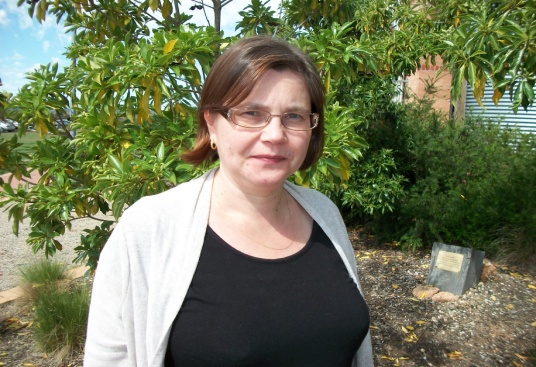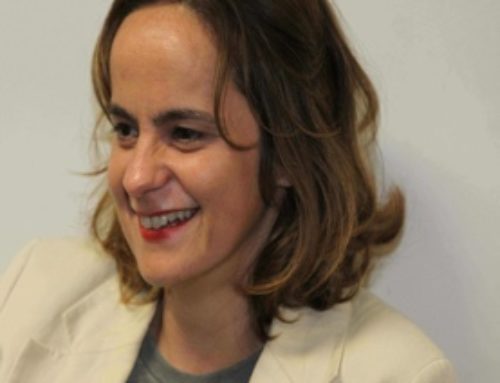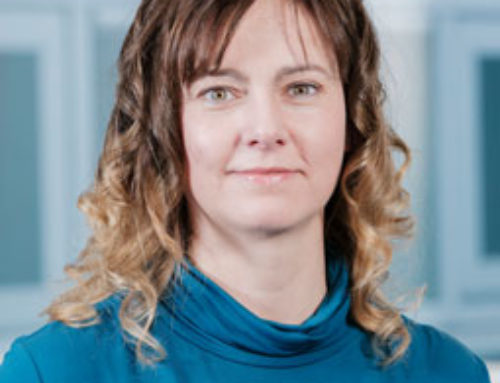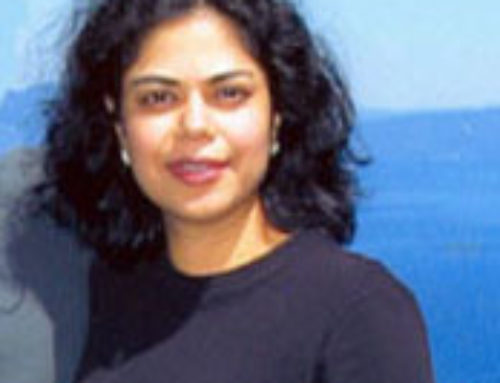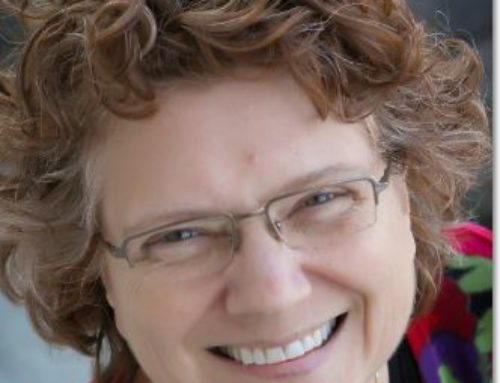HETL Note: We are pleased to publish this interview with Dr. Tuja Turunen who was interviewed by Dr. Liisa Uusimaki during her term with Charles Sturt University (Australia). The interview highlights important features of teacher education programmes in Finland that have led to successful and internationally recognised teacher education programmes. Comparing the Australian and the Finnish contexts Dr. Uusimaki draws conclusions about the feasibility of an educational reform that may both raise the social status of the school teacher profession, and provide a framework for better teacher education.
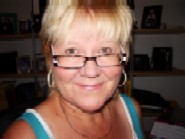 Author Bios: Dr. Liisa Uusimaki is currently working as a senior lecturer at the University of Gothenburg (Sweden); prior to Sweden she worked as a teacher educator at Charles Sturt University (Australia). She was also a member of the management team of the Middle Years Association of Australia (MYSA). A passion and a commitment to high quality educational experiences for all school children is the underlying motivating factor for her work as a teacher educator. Areas of research include internationalisation, preservice teacher education, teacher identity, career changers, middle schooling, philosophy and educational psychology. Contact details: [email protected] or [email protected]
Author Bios: Dr. Liisa Uusimaki is currently working as a senior lecturer at the University of Gothenburg (Sweden); prior to Sweden she worked as a teacher educator at Charles Sturt University (Australia). She was also a member of the management team of the Middle Years Association of Australia (MYSA). A passion and a commitment to high quality educational experiences for all school children is the underlying motivating factor for her work as a teacher educator. Areas of research include internationalisation, preservice teacher education, teacher identity, career changers, middle schooling, philosophy and educational psychology. Contact details: [email protected] or [email protected]
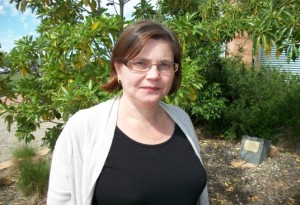 Dr. Tuija Turunen is Senior Lecturer in primary school teacher education in University of Lapland, Finland, and currently works as a Post-Doctoral Research Fellow in Research Institute for Professional Practice, Learning & Education at Charles Sturt University, Australia. Her research interests focus on transition to school and curriculum in early years. Please find more information on Tuija’s web site. Contact details: [email protected] or [email protected]
Dr. Tuija Turunen is Senior Lecturer in primary school teacher education in University of Lapland, Finland, and currently works as a Post-Doctoral Research Fellow in Research Institute for Professional Practice, Learning & Education at Charles Sturt University, Australia. Her research interests focus on transition to school and curriculum in early years. Please find more information on Tuija’s web site. Contact details: [email protected] or [email protected]
Krassie Petrova and Patrick Blessinger
~~~~~~~~~~~~~~~~~~~~~~~
Teacher Education: Keeping up with the Finns?
Liisa Uusimaki, Charles Sturt University, Australia
Tuija A. Turunen, University of Lapland, Finland
Regardless of the time consuming and complex process of becoming a teacher in Finland teaching is “the single most desirable career choice among young Finns” (OECD, 2010). Perhaps the combination of strict selection criteria regarding who can become a teacher in Finland, the rigour of the teacher education program and the high status afforded to education and teachers are factors influencing the popularity of teaching. This is in contrast to Australia where teaching does not enjoy the same high status as it does in Finland, and where it is not a favoured choice of study among the majority of Australian school leavers. The most popular fields of study after Year 12 are management and commerce (19%) followed by society and culture (16%), creative arts (13%), engineering (11%) and health (10%) (Australian Bureau of Statistics, 2010).
That the teacher is the most important factor in successful learning outcomes for children is no longer a contested issue. Rather, the question now is about how to ensure high quality teaching and learning opportunities for all children. The announcement made by Prime Minister Gillard (2012) aiming to make the Australian school system among one of the best in the world by 2025 begs the question of how can this be done? Is there something in the Finnish model that could be transferred to suit the Australian context? To explore the Finnish Teacher Education system this article begins with a brief explanation of the Finnish context. Following this will be an informal interview held with Dr Tuija Turunen, a Senior Lecturer from the University of Lapland, Finland, a former Early Childhood Primary classroom teacher and a visiting post-doctoral research fellow in Australia.
There are eight Universities in Finland offering teacher education programs and one University offering a Swedish teacher education program. Each university determines the criteria for entry and the number of places they offer. In 2012, 8 000 applicants competed for 670 places in primary school teacher education degrees (VAKAVA, 2012). The length of teacher education programs in Finland is in general between four to six years depending on the teaching speciality chosen. The basic qualification for primary and secondary school teachers in Finland is a Master’s degree. In Australia there are 22 Universities that offer teacher education programs, and in general it takes 4 years to become a primary or secondary teacher, while for graduates with a first degree it takes between 1 to 2 years (Uusimaki, 2010). Student places in teacher education degrees are uncapped, and the criterion for selection is based on Year 12 results and / or a first degree for a graduate entry (Caldwell & Sutton, 2010).
Research is central to Finnish teacher education programs (Jakku-Sihvonen & Niemi, 2006). In the Bachelor’s degree all preservice teachers complete a minor research projects and in the Master’s degree the research project forms the major component of study. To support students in the development of their research skills both Bachelors’ and Masters’ Degrees include subjects covering many aspects of research, including qualitative and quantitative methodologies as well as scientific writing. The reason for this emphasis on understanding and conducting research as a major component of preservice teaching degrees in Finland is “that teachers are expected to engage in disciplined inquiry in the classroom throughout their teaching career” (OECD, 2010, p. 125). In other words, there is a firm belief that research both informs and supports teaching and learning practices in classrooms. Another requirement in Finland is that the preservice teacher is required to read professional journal articles and reports in other languages, such as English, from the very beginning of their studies.
As in most other countries, teacher education in Finland consists of both theoretical and practical studies including subject content, teaching methods, educational studies and field experiences or practicum. Field experiences are considered an essential part of education. The aim of the field experience is to promote student teachers’ development toward expertise in pedagogy, with constant research and development of their work containing dynamic interaction between theory and practice (Finnish Ministry of Education, 2007; Turunen & Tuovila, 2012). The proportion of field experiences in Finnish primary school teacher education is one of the highest in Europe (ETUCE/CSEE, 2008). Most of the field experiences take place in a school attached to the Faculty of Education. In Finland each university offering teacher education programs has a school attached to it. For example, if a university offers a primary teacher education program then there is a Primary school attached to the university. The school’s teaching staff are highly qualified professionals who lecture at the university in a variety of subjects and are qualified in mentoring skills. In this article, Dr Liisa Uusimaki interviews Tuija Turunen and explores issues relating to teacher education in Finland.
Liisa Uusimaki (LU): Similar to Australia, students in Finland have to complete their senior high school before they can apply to the University teacher education programs. In contrast to Australia students applying for places in Finnish teacher education programs have to successfully pass a number of stages. Could you elaborate on this?
Tuija Turunen (TT): The first stage in the process of being accepted into Teacher Education Programs is to complete the national entrance examination, which is called ‘VAKAVA’ [National Entrance Exam for Educational Studies]. It is a big thing and happens at the same time all over Finland. Based on the results of this test each University then selects the students they want to invite to the second stage of the entry process, which commonly involve a group and individual interviews.
At the University of Lapland we provide a Primary School Teacher Education Program and our intake is about 60-65 students per year. We had approximately 900 applicants seeking entry to our teacher education program in 2010 and based on the applicants VAKAVA results, about 240 applicants were invited to the second stage of the selection process.
At the University of Lapland the second stage involves participating in a group discussion and that is followed by individual interviews. We have several interview panels with three panel members on each of them. The panel consists of a senior lecturer, a primary classroom teacher from the primary school attached to the Faculty of Education and a junior Faculty member. During the group discussions the applicants are allocated to groups from four to six.
They are provided with a variety of educational topics to read, and then each applicant is required to lead a ten minute group discussion. During the group discussions our role as panel members is to observe the participants. We have guidelines to help us to do that. After the group discussion each applicant is interviewed individually for approximately ten minutes about their reasons for wanting to become a teacher.
LU: In the group discussions what are the sort of things the panel members observe or look for in a student teacher?
TT: As each applicant leads a ten minute discussion relating to an article about some aspect of education, we are looking for leadership qualities where a person is confident and can take charge, but not to the extent that they actually don’t listen to anyone else. We are looking for personalities who can be polite and empathetic. We look for someone who knows how to be inclusive, to be able to include those who are not talking or contributing to the conversation.
So we are looking for people who are able to listen to others, who can encourage others and who have the ability to make others feel included, ‘oh that was a good point I think’ or even ‘I don’t agree with that. Can you explain a bit more?’ Things like that – there are always applicants who talk, talk, talk but who are not saying anything important.
LU: So how does that relate to teaching children?
TT: The main focus of this process is that we try to identify those applicants, who, we think, are not suitable to be teachers. They may be too shy, which might mean they will have challenges in the teaching profession when dealing with parents and or colleagues, or they might be people who are so full of themselves that they are not able to listen to anybody else or understand different perspectives.
LU: What else do you look for in students who want to become teachers?
TT: We want the best teachers. We want them to have been successful in their studies in senior high. Of course they need to be able to read and write and have a good general knowledge. The ‘VAKAVA’ entrance examination does not require any writing, but is a multiple choice test and that is a bit of a worry.
The selection process at the University of Lapland is based on a ranking system which is combination of the applicants’ scoring in the group discussion, the individual interview, and their matriculation results.
Because it is quite hard to get into the Primary School Teacher Education Program, our students are usually highly motivated to complete their studies. They want to become teachers and so the majority of our applicants will graduate as teachers. We don’t usually have dropouts. Of course every now and then, we do but it is not at all common.
LU: Part of the teacher education degree involves the practicum or field experience – can you provide an outline how the practicum plays out in the teacher education degree? For example, how many practicum placements are there? Is there a supervisor the student is allocated to at both the school and the university? Is the classroom supervisor especially trained to mentor preservice teachers?
TT: It differs among the universities in Finland. Every Finnish University offering teacher education programs has a school (whether or primary or secondary school, or both) attached to its Faculty of Education. At the University of Lapland we have a primary school attached to our Faculty and this is where most of the practicums take place. This primary school caters for Years 1 to 6. The teachers at the school are all highly qualified and have expertise in the supervision of preservice teachers and some of them also provide lectures in our teacher education program. At the Faculty we work closely with these teachers in planning and in delivering the practicums. I think it is really powerful to be able to plan the practicums together with teachers in the primary school.
LU: What sort of things do the preservice teachers do during the practicum?
TT: At the University of Lapland the first practicum takes place in the first year in November is called the ‘Orientation Practicum’. The reason for students to be placed in the classroom so early on in their degree is because we want to provide a firsthand teaching experience. The ‘Orientation Practicum’ is three weeks in duration and the preservice teachers’ task is to mainly observe to familiarize with the children and the classroom activities. Of course they are also encouraged by their supervising teacher to plan and execute some teaching segments whether in a group, in pairs or alongside the teacher.
In the second year we provide a much longer practicum. It is nearly two months and our preservice teachers do lots of planning and teaching. The focus of this second practicum is on preservice teachers’ subject knowledge and pedagogical approaches related to different subjects.
The third year practicum is called the ‘Field Practicum’ and this is when preservice teachers are not placed in the primary school attached to the Faculty but are encouraged to complete the five week practicum outside the University either locally in the city of Rovaniemi, or alternatively elsewhere in Finland, or even abroad. The ‘Field Practicum’ is focused on experiencing different school cultures in order to develop a more comprehensive and overall picture of teachers’ work.
The fourth and the last practicum is called the ‘Advanced Practicum’. The focus of this practicum is to support and develop preservice teachers’ teacherhood. This concept refers to reflecting on being a teacher. For example, what kind of teacher am I? What kind of teacher do I want to be? What we want to see and what hopefully happens is that preservice teachers develop their own understanding, and most importantly their own personal pedagogical philosophy about what it is to be a teacher. From this emerges pedagogical knowledge about what I am supposed to do and an understanding about how to combine theory and practice.
During this final practicum there are two preservice teachers attached to each classroom and their responsibility is to take care of all teacher duties in that classroom. The role of the supervising primary school teacher is just to ensure everything goes smoothly.
My role as the university lecturer or senior lecturer is to regularly visit and provide feedback to the preservice teachers both in their second year practicum and in their final fourth year Advanced Practicum.
LU: What differences / similarities do you think there is in teaching and learning at the University level between your country and what you have experienced here at Charles Sturt University in Australia?
TT: Similarities are that your students, as in Finland, are very proud, clever young people who are willing and able to work really hard. They are interested in developing their teacherhood, understanding children and developing their pedagogical knowledge, but there might also be students who are not so keen on becoming a teacher or do the hard work associated with the studies needed to become a teacher. Of course even though we have in Finland this highly complex system of choosing our students, we still have students who are not so willing to do the hard work.
In Australia teacher education subjects require preservice teacher to write essays and to complete readings about teaching and learning. We do that as well in Finland. What is different in Finland is that from the very beginning we introduce research to our students. My teaching is based on research, either my own or someone else’s. Of course we have books and other reading attached to subjects that preservice teachers are expected to read. I don’t talk about what is in the book because they can read the book themselves. Every now and then I have some questions from the first year students asking me why I was not talking about the book – I tell them they can read it themselves and during the lectures we can concentrate on other things, such as research.
LU: What is one thing you will take with you from Australia back to Finland?
TT: I think this Middle School pedagogy is so exciting and I am learning all about the K-12 Degree offered here at CSU, and find it is a wonderful program. So yes, I would like to take that with me to Finland. As a mother of a teenage son, the other thing I like is the school uniform all children have to wear – I love it because with a school uniform you do not have to think what to wear.
LU: Tuija, thank you for answering my questions.
To conclude, implementing the kind of high quality teacher education system and process that can be found in Finland, where the best and brightest young minds come to teaching, is e achievable. To raise the status of teaching as a worthwhile and attractive career; increasing competition for entry controlling the numbers of students accepted into teacher education programs must be at the centre of a teacher education reform. It is heartening to note recommendations (see Caldwell & Sutton, 2010; Masters, 2012) that teaching should become a graduate profession, that there should be higher entry standards and a restriction on the intake of teachers into teacher education programs. The government’s response, to target the top 30% of school leavers into the profession (Gillard, 2012) is of course commendable.
However, academic ability is not the only factor ensuring successful learning outcomes in our children; rather this must be combined with altruistic qualities such as perseverance, ability to motivate children, a passion for children as well as organisational and highly developed communication skills.
References
Australian Bureau of Statistics. (2010). Are young people learning or earning. Retrieved June 4, 2012 from http://www.abs.gov.au/AUSSTATS/[email protected]/Lookup/4102.0Main+Features40Mar+2010
Caldwell, B., & Sutton, D. (2010). Review of teacher education and school induction. First report- full report. Retrieved October 20, 2012 from http://education.qld.gov.au/students/higher-education/services/projects/review.html
ETUCE/CSEE. (2008). Teacher education in Europe. An ETUCE policy paper: ETUCE European Trade Union Committee for Education.
Finnish Ministry of Education. (2007). Opettajankoulutus 2020 [Teacher Edcuation 2020]. Helsinki: Ministry of Education.
Gillard, J. (2012). Better schools. Retrieved 5 October 2012 from http://www.alp.org.au/federal-government/news/better-schools/
Jakku-Sihvonen R. , & Niemi H. (Eds.). 2006. Research-based teacher education in Finland. Reflections by Finnish teacher educators. Turku, Finland: Finnish Educational Research Association.
Masters, G. (2012). Enhancing the Quality of Teaching and Learning in Australian Schools. Australian Council for Educational Research (ACER) Retrieved 5 October 2012 from http://www.acer.edu.au/documents/Masters_submission_to_Senate_Inquiry.pdf
OECD (2010). Finland slow and steady reform for consistently high results. Retrieved 4 May 2012 from http://www.oecd.org/dataoecd/34/44/46581035.pdf
Turunen, T., & Tuovila, S. (2012). Mind the gap. Combining theory and practice in a field experience. Teaching Education 23(2), 115-130.
Uusimaki, S-L. M. (2010 PhD thesis). Preservice teacher education and the development of middle school teacher identity: An exploratory study. Brisbane, QLD.
VAKAVA Valtakunnallisen kasvatusalan valintayhteistyöverkosto. (2012). Retrieved 5 December 2012 from http://www.helsinki.fi/vakava/
Interview date & place: 2 October 2012, in Albury, Australia.
This interview article was accepted for publication after a single-blind peer review involving three independent members of the Reviewer Board of International HETL Review, and a subsequent revision. Accepting Editor: Krassie Petrova, Editor-in-Chief, International HETL Review (IHR).
Suggested Citation
Uusimaki, L & Turunen, T. A. (2013). Teacher education: Keeping up with the Finns?: An interview with Dr. Tuija Turunen. Interviewer: Liisa Uusimaki. International HETL Review, Volume 3, Article 3, https://www.hetl.org/interview-articles/keeping-up-with-the-finns/
Copyright © [2013] Liisa Uusimaki, Tuija Turunen and International HETL Association
The author(s) assert their right to be named as the sole author(s) of this article and the right to be granted copyright privileges related to the article without infringing on any third party rights including copyright. The author(s) retain their intellectual property rights related to the article. The author(s) assign to HETL Portal and to educational non-profit institutions a non-exclusive license to use this article for personal use and in courses of instruction provided that the article is used in full and this copyright statement is reproduced. The author(s) also grant a non-exclusive license to HETL Portal to publish this article in full on the World Wide Web (prime sites and mirrors) and in electronic and/or printed form within the HETL Review. Any other usage is prohibited without the express permission of the author(s).
Disclaimer
Opinions expressed in this article are those of the author, and as such do not necessarily represent the position(s) of other professionals or any institutions.

